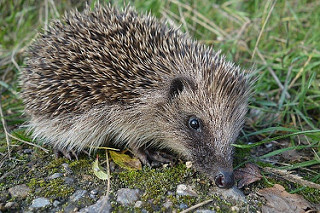Biggest analysis of British nature ever rings alarm bells
Release Date 08 December 2015

Scientists have warned that British wildlife is at its most perilous state ever recorded in the past 40 years, after conducting the biggest ever nationwide analysis of biodiversity trends.
Using tens of millions of records dating back to 1970, scientists found that UK native biodiversity has not only suffered an overall continuous decline, but that some species groups are under particular threat.
In some species groups fulfilling critical roles, including pollination and pest control, the number of declining species is neither offset by those native species which are increasing in occurrence, nor by the arrival of new species to Britain.
See pictures of species featured in the report >>>
Dr Tom Oliver, an ecologist at the University of Reading, led the research. He said: "There have been many efforts to track the changing prospects of wildlife, but this is the biggest and most comprehensive report ever assembled for any country in the world.
"By standardising records from an army of amateur biologists across the country, we have amassed an impressive array of data, giving us our most complete picture yet of the state of Britain's wildlife.
"The picture that emerges is of an increasingly fragile system, particularly in species that do vital jobs for humans. Unless efforts are made to reverse some of these declines, we face a future where we will be less confident that we can effectively grow our food."
'The picture that emerges is of an increasingly fragile system, particularly in species that do vital jobs for humans' -- Dr Tom Oliver
The researchers used millions of records from thousands of trained volunteer recorders across Britain, covering 22 broad species groups - such as bees, dragonflies, grasshoppers, ladybirds, plants and mosses.
The scientists analysed the changing fortunes of 4,424 species across the country between 1970 and 2009, grouping the species into key ecosystem functions of pollination, pest control, cultural value, decomposition and carbon sequestration.
While all groups saw declines in native species, larger numbers of increasing species, including new species arriving into the country, for those in the decomposition and carbon sequestration categories meant these ecosystem functions remain relatively stable.
However, groups providing pollination and pest control suffered greater declines that were not offset by increasing species or new arrivals. For example, the banded hoverfly Syrphus ribesii feeds on aphid pests and has been shown to be significantly declining in occurrence. Hoverflies are also important pollinators of crops and wildflowers.
Focused conservation
The researchers conclude that conservation efforts should be focused on those areas for which there is strong evidence of declining fortunes.
Professor James Bullock, of the Centre for Ecology and Hydrology, who co-led the work, said: "While this analysis sends us a warning, concerted conservation efforts may allow us to halt these declines.
"Conservation actions, such as wildlife-friendly farming, can avoid the loss of biodiversity and the resulting erosion of the pollination, pest control and other benefits we derive from nature."
Dr Oliver added: "While this new study was carried out with new sophisticated analysis techniques, it was only possible due to the commitment and dedication of trained volunteers associated with natural history recording schemes in Britain.
"Without these committed and skilled individuals, British scientists and policymakers frankly would be in the dark about the state of our wildlife."
Richard Soulsby, 68, a retired oceanographer, has volunteered to collect detailed butterfly records in Oxfordshire for the last 20 years.
He said: "It is very rewarding to see that our efforts in recording species over the years has been analysed in such detail, and has helped to produce such important results for understanding the state of British wildlife."
The study was carried out by scientists at the University of Reading and the Centre for Ecology and Hydrology, and is published today (4pm Tuesday 8 December) in the journal Nature Communications.
The full paper is freely available from http://nature.com/articles/doi:10.1038/ncomms10122
Photo by Nadine Mitschunas
